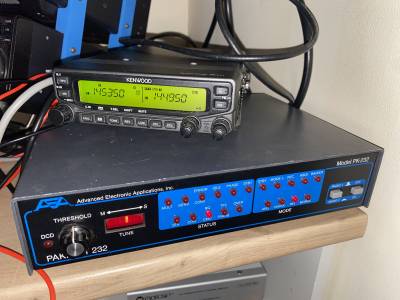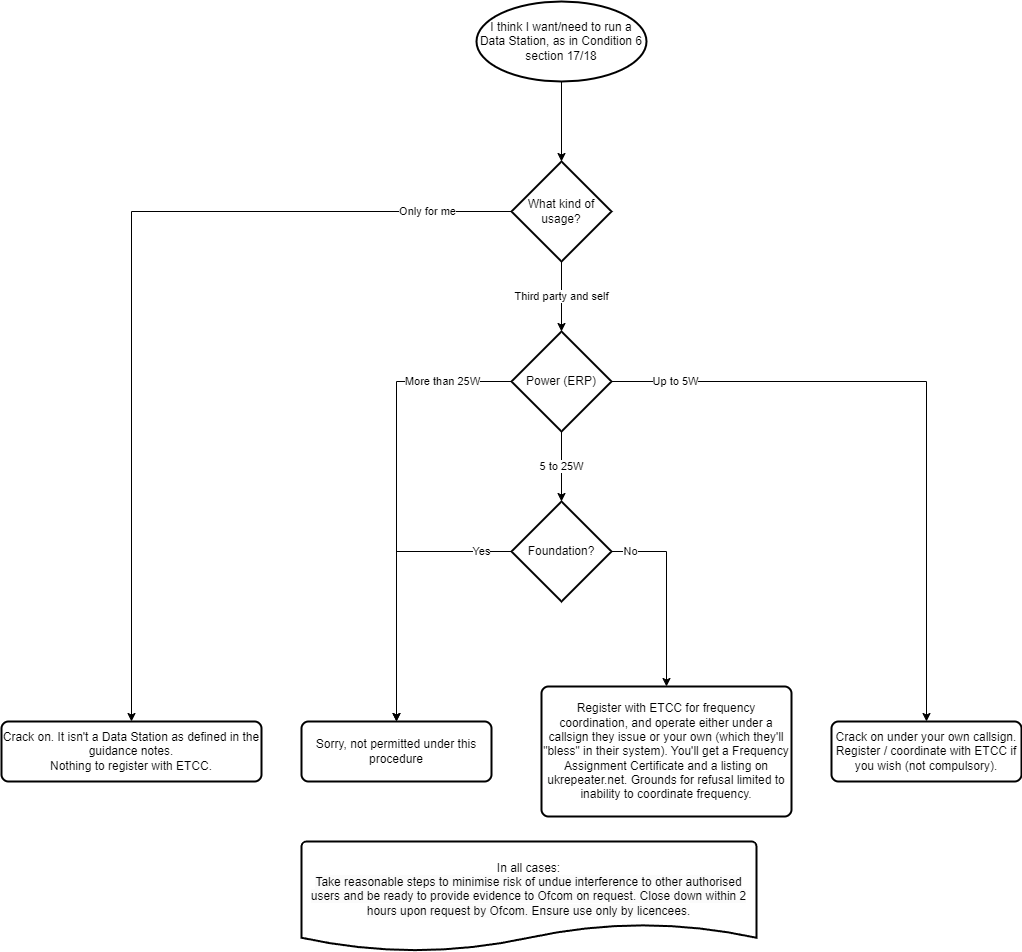Table of Contents

What is Packet Radio?
Packet Radio gained popularity in the amateur radio community in the 80s and 90s as a method of transmitting data split into “packets” across the country and even further afield, before the internet was widely available.
Various modulations and encodings exist, but the most popular proved to be AX.25 over 1200 Baud AFSK over VHF/UHF links, and 300 baud FSK over HF. To get a packet from one end the country to another, networks of “nodes” popped up that could relay a packet to other neighbouring nodes, over either a shared channel, or a direct link with a dedicated frequency to avoid collisions. Over time, additional protocols were implemented to route packets automatically and improve efficiency.
As the internet gained popularity, interest in packet radio dwindled and nodes slowly shutdown until packet radio in the UK was all but extinct. However, in the last couple of years there has been a renewed interest in packet radio, as radio amateurs seek out ways of building data networks that do not depend on the public internet.
The new licence
In February 2024 the UK got a new amateur radio licence, clarifying and liberalising to a reasonable degree what we can do. Our interpretation is as follows:
If you want or need to declare your station to ETCC, and/or want them to issue you a callsign for it, here's the link: https://rsgb.online/etccsecureforms/self_declare1.php
What can I do with Packet Radio?
- Send and receive files, documents, computer programs etc.
- Link to other custom applications
National Packet Network project
A significant group of people are now engaged in (re)building a radio-centric packet network across the UK.
If you're interested in getting involved join the OARC Discord Server if you haven't already, and check out the #packet-network channel.
You can also join our groups.io mailing list, if Discord isn't your thing: https://groups.io/g/ukpacketradio
Check out the UK Packet Network Wiki at https://ukpacketradio.network/
We do have some handy guides to help you get started:
And for a slightly different angle, check out Hibby's Packet Radio Guide
Project Updates
Node Directory
The full listing of nodes operating under NoVs is available here: https://ukpacketradio.network/
There is an interactive map of the nodes which have ETCC NoVs here: https://nodes.ukpacketradio.network/etcc-packet-map.html
A listing of member nodes is available here: Node Directory
NinoTNC
A building block of packet radio is the Terminal Node Controller, also known as TNC. Similar to a modem, the TNC interfaces with a radio to do the required modulation and demodulation and trigger the PTT so data can be sent via a radio.
The NinoTNC is a modern hardware TNC kit, connected by USB. It supports traditional 300, 1200 and 9600 baud packet as well as some more modern experimental modes designed to be more efficient that also include forward error correction. The NinoTNC has become an integral part of many new packet radio deployments in the UK and further afield.
For further information about experimental HF operations with the NinoTNC, see this page.
The NinoTNC board and chip is often available in the UK here: https://ko-fi.com/s/981d919ea3 - failing that, see https://tarpn.net/t/nino-tnc/n9600a/n9600a_info.html
Useful Documentation
- Packet Glossary - A breakdown of phrases and acronyms and what they mean
- Packet Station Building - Tips and guides on building your own packet station
- packet-radio.net - A massive resource for everything packet radio. See the docs section for specifications and manuals.
- Finding other Packet peers - Find other amateurs that might be interested in playing with packet or peering to build out a packet network.
- Packet Radio in the 2020s - More detailed information on using packet radio in 202X
- QtTermTCP - Setting up QTTcpTerm - Excellent software to drive a KISS enabled TNC
- Packet Radio with a NinoTNC kit - building your own TNC - also why not all Baofengs and clones are the same…
- The KISS TNC: A simple Host-to-TNC communications protocol 1987 Paper by Mike Chepponis, K3MC and Phil Karn, KA9Q
- Rig support for 9600 BAUD packet - some measurements to determine why two commercially available rigs perform poorly for 9600 BAUD packet
A-Z


